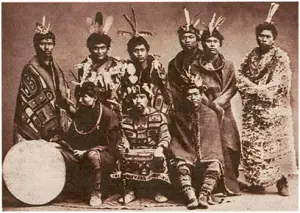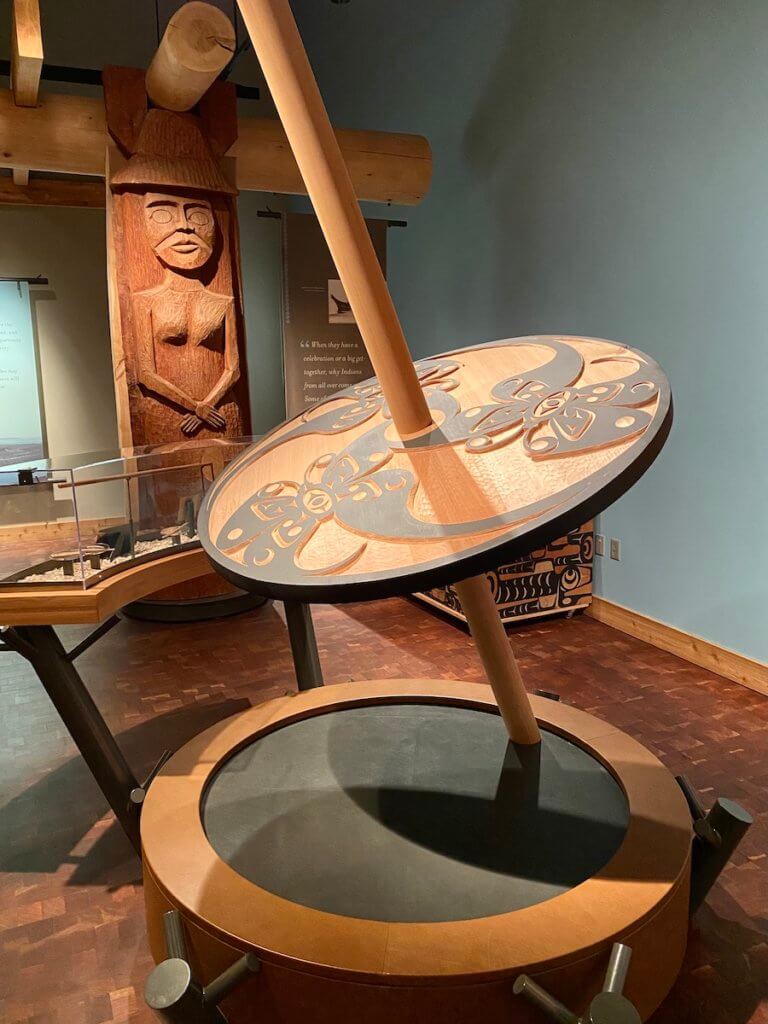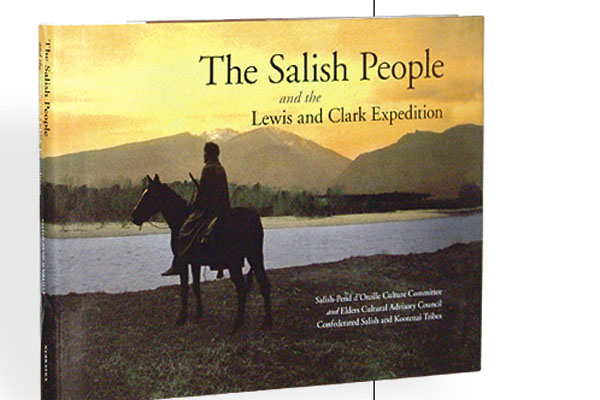The Salish People: A Rich Tapestry of Culture and Resilience
The Salish People: A Rich Tapestry of Culture and Resilience

The Salish people, a diverse Indigenous group residing in the Pacific Northwest region of North America, boast a rich and complex history spanning centuries. Their cultural identity, marked by intricate art, vibrant storytelling, and a deep connection to the land, has persevered through generations, despite facing numerous challenges. This article explores the history, culture, and present-day experiences of the Salish people, highlighting their resilience and the ongoing fight for recognition and self-determination.
A Diverse and Widespread People:
Related Articles: The Salish People: A Rich Tapestry of Culture and Resilience
- Unveiling The Wealth Of Indigenous Cultures: Top 10 Richest Tribes In The World
- Unveiling The Wealth Of Indigenous Nations: Exploring The Richest Indian Tribe In America
- A Tapestry Of Traditions: Exploring The Rich Culture Of Central America
- Unveiling The Riches: Exploring The World’s Wealthiest Tribes
- Del Lago Resort & Casino: Where Luxury Meets Entertainment In The Finger Lakes
The term "Salish" encompasses various distinct First Nations groups, each with their own unique language, traditions, and territories. While their exact origins remain debated, archaeological evidence suggests a long-standing presence in the region, dating back thousands of years. Linguistically, the Salish are divided into two main branches: the Coast Salish and the Interior Salish.
Coast Salish:
The Coast Salish, residing along the Pacific coast of Washington, British Columbia, and southern Alaska, are known for their maritime lifestyle. Their traditional territories encompass the Salish Sea, including Puget Sound, the Strait of Juan de Fuca, and the Fraser River. The Coast Salish relied heavily on fishing, hunting, and gathering resources from the ocean and forests. Their intricate artwork, characterized by bold colors and geometric designs, reflects their deep connection to the natural world.
Interior Salish:
The Interior Salish, inhabiting the interior regions of British Columbia and Washington, have a more diverse subsistence pattern. They adapted to the varied landscapes, including grasslands, forests, and mountains, relying on hunting, fishing, and gathering, as well as agriculture. Their cultural practices, while sharing some commonalities with the Coast Salish, exhibit distinct variations, reflecting their unique environment and traditions.
A Legacy of Storytelling and Art:
The Salish people are renowned for their powerful storytelling tradition. Oral history plays a vital role in preserving their culture, knowledge, and ancestral wisdom. Myths, legends, and creation stories are passed down through generations, shaping their understanding of the world and their place within it. These narratives are often interwoven with the intricate art forms that characterize Salish culture.
Art as a Reflection of Culture:

Salish art is a testament to their creativity and artistic prowess. From intricately carved totem poles to vibrant woven blankets, their artistic expressions reflect their deep connection to the natural world and their spiritual beliefs. Totem poles, towering monuments carved from cedar wood, represent family lineages, clan symbols, and ancestral spirits. The intricate designs and vibrant colors on these poles serve as powerful visual narratives, conveying the stories and history of the Salish people.
Weaving and Beadwork:
Weaving and beadwork are other significant art forms among the Salish. Woven blankets, often adorned with intricate patterns and vibrant colors, were essential for warmth and ceremonial purposes. Beadwork, using intricate patterns and vibrant colors, adorned clothing, accessories, and ceremonial objects. These art forms not only served practical purposes but also reflected the Salish people’s aesthetic sensibilities and their connection to the natural world.
The Impact of Colonization:
Like many Indigenous groups in North America, the Salish people faced significant challenges due to European colonization. The arrival of settlers brought disease, displacement, and the forced assimilation of their culture. Residential schools, designed to eradicate Indigenous languages and traditions, had a devastating impact on generations of Salish children. Despite these hardships, the Salish people have shown remarkable resilience, preserving their cultural identity and fighting for their rights.

Contemporary Salish Culture:
Today, the Salish people are actively engaged in revitalizing their language, traditions, and cultural practices. Language programs, cultural festivals, and art exhibitions are helping to ensure the survival of their heritage. Many Salish artists are creating contemporary art that blends traditional techniques with modern perspectives, showcasing the enduring strength and beauty of their culture.
Salish Self-Determination:
The Salish people are actively pursuing self-determination and sovereignty. They are working to reclaim their traditional territories, protect their cultural heritage, and advocate for their rights. Through land claims, treaty negotiations, and cultural revitalization efforts, they are striving to create a future where their voices are heard and their cultures are respected.
Challenges and Opportunities:

The Salish people continue to face challenges, including the impacts of climate change, economic disparities, and the ongoing struggle for recognition and self-determination. However, they are also embracing opportunities to create a more sustainable and equitable future. They are working to protect their traditional territories, promote economic development within their communities, and advocate for policies that support Indigenous rights and well-being.
Conclusion:
The Salish people, a diverse and resilient group, have a rich history and a vibrant cultural legacy. Their stories, art, and traditions offer valuable insights into the resilience of Indigenous cultures and the enduring spirit of their people. As they navigate the challenges of the present, the Salish people continue to fight for their rights, preserve their heritage, and create a more just and equitable future for generations to come.
FAQ about Salish People:
Q: Where are the Salish people located?
A: The Salish people reside in the Pacific Northwest region of North America, encompassing parts of Washington, British Columbia, and southern Alaska.
Q: What are the main branches of the Salish people?
A: The Salish people are divided into two main branches: the Coast Salish and the Interior Salish.
Q: What are the Salish people known for?
A: The Salish people are known for their intricate art, vibrant storytelling, and deep connection to the land. They are also known for their resilience and their ongoing fight for recognition and self-determination.
Q: What are some examples of Salish art?
A: Salish art includes totem poles, woven blankets, beadwork, and carved masks.
Q: What challenges do the Salish people face today?
A: The Salish people face challenges such as the impacts of climate change, economic disparities, and the ongoing struggle for recognition and self-determination.
Q: What are the Salish people doing to address these challenges?
A: The Salish people are working to protect their traditional territories, promote economic development within their communities, and advocate for policies that support Indigenous rights and well-being.
Q: What is the future outlook for the Salish people?
A: The Salish people are optimistic about their future. They are working to revitalize their language, traditions, and cultural practices, and they are committed to creating a more just and equitable future for generations to come.

Closure
Thus, we hope this article has provided valuable insights into The Salish People: A Rich Tapestry of Culture and Resilience. We appreciate your attention to our article. See you in our next article!


